With charming landscapes, mighty Alpine peaks, crystal-clear lakes and romantic cities, Bavaria is one of the most popular travel destinations in Germany. Whether hiking through forests and meadows, wellness camping or strolling through the city of Munich - a holiday in Bavaria is an experience at any time of the year.
Special regulations for driving with trailers
There are over 700 parking spaces in the southernmost German federal state, so motorhome holidays are versatile and varied. Car trailers are ideal for transporting larger loads . Sports equipment, strollers and luggage needed for a camping holiday are best transported in a trailer. Regardless of whether the trailer is a small "hardware store model", a larger trailer such as a caravan or a special trailer for bicycles, motorcycles, boats or horses, there are a few things to consider when handling the trailer. First of all, the correct driving license is the most important basic requirement when driving with a trailer. It essentially depends on the total mass of the trailer as to whether a class B driving license (normal car driving licence), B 96 or BE is required. A class B driving license is sufficient to drive a trailer with a permissible total weight of up to 750 kilograms. A B 96 driving license is often required for caravans. When it comes to car trailers, a distinction is made between braked trailers, which have their own braking devices, and unbraked trailers. The maximum trailer load also depends on the respective trailer type. This maximum permissible load is noted in the registration certificate (vehicle registration document) for both types. The maximum trailer loads of vehicles can vary greatly. In general, they are between a few hundred kilograms and 3.5 tons and must not be exceeded under any circumstances.
The right protection for the trailer combination
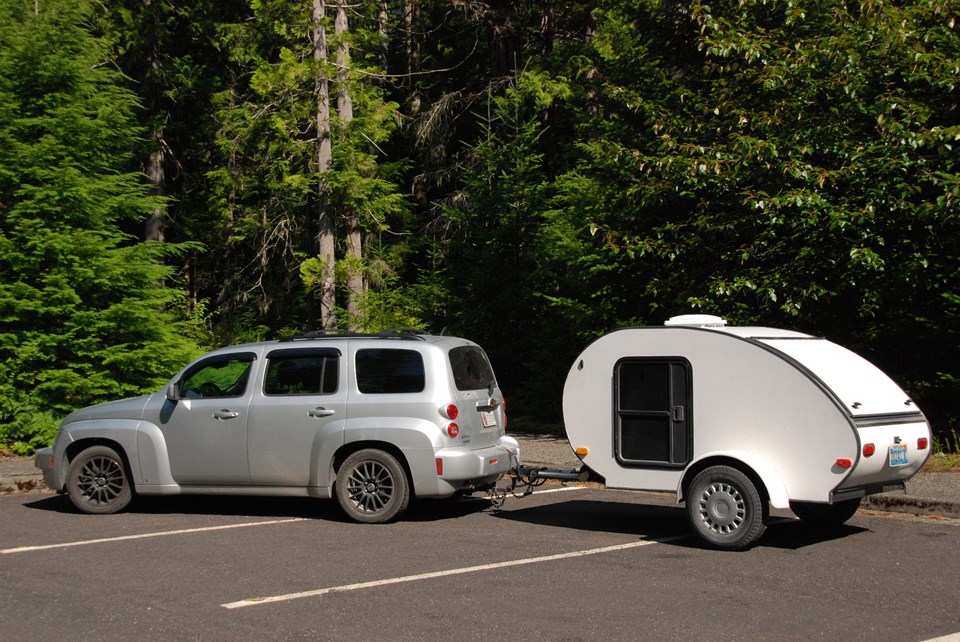
There are a few special rules to follow when driving with a trailer combination. In principle, a maximum of one trailer may be towed with a class B vehicle. In addition, there are different speed limits when driving with a trailer than when driving without a trailer. Depending on the towing vehicle, the maximum permitted speed varies between 60 and 80 km/h. If at least three lanes are marked by guidelines for one direction of travel outside built-up areas, the left lane may only be used for turning left when driving with a trailer. On the motorway, however, the left lane is usually not allowed to be used for towing trailers. To ensure that overtaking vehicles are not endangered, a so-called stopping distance must be maintained outside built-up areas for vehicle combinations with a total length of more than seven meters. The minimum distance to the vehicle in front must be large enough to allow an overtaking vehicle to cut in without any problems. Since 2002, it has been a legal requirement that every trailer that is used on the road must have its own insurance, the so-called trailer insurance, regardless of the towing vehicle. Compared to car insurance, trailer insurance usually has significantly cheaper conditions. In order to find the right tariff, it makes sense to compare trailer insurance from different insurance companies using a tariff comparison on an independent comparison portal such as Verivox. The right trailer insurance can be easily found using the Verivox comparison calculator based on individual criteria . The amount of the insurance premium depends on the value of the trailer and its permissible total mass.
Driving and parking with motor vehicle trailers
Until 2002, trailers were counted as part of the respective towing vehicle for insurance purposes and were automatically insured in the vehicle insurance. However, in the event of an insurance claim, it was often difficult to settle the claim, so most cases ended up in court. Since the trailers have been insured under separate trailer insurance following the change in the law, legal disputes have occurred much less often. Similar to car insurance, the owner of the trailer decides what level of insurance is eligible. Only liability insurance is required by law, while partial and fully comprehensive insurance can be taken out optionally. Liability covers third parties and covers personal injuries and property damage caused by the trailer. With partial comprehensive insurance, the trailer is additionally insured against fire, short circuits, theft, collisions with wild animals and damage caused by force majeure. Fully comprehensive insurance also covers the risk of vandalism and damage caused by self-inflicted accidents with the trailer. In order to avoid accidents, the special rules that apply to driving with trailers should be carefully observed and the vehicle should be technically checked again before departure. A motor vehicle trailer without a towing vehicle may be parked in a public space in a specific location for a maximum of two weeks. Specially designated parking spaces are exempt from this regulation. If the trailer is parked on the road in a built-up area, it must be clearly marked with a parking warning sign or another light source. In addition, it should be noted that no people are allowed to be transported on the loading area, in caravans or in the loading space of trailers.
Adapt your driving style to the unusual dimensions

When driving with a trailer, the braking distance is significantly longer than with a conventional car. Braked trailers that are towed by a car usually have an automatic overrun brake. When the towing vehicle is braked, the overrun brake is simultaneously pushed together due to the weight of the oncoming trailer, so that the mechanical brakes of the trailer are activated automatically. Since some types of trailer cannot distinguish between braking and reversing, there is a risk that an overrun brake will accidentally activate when reversing. That's why these trailer models are equipped with a reversing lock that must be locked and unlocked beforehand. Due to the unusual dimensions, inexperienced drivers in particular are recommended to drive carefully and cautiously and to adapt their driving style to the higher weight of the vehicle combination. When driving with a trailer, it should be borne in mind that significantly more space is required , the acceleration capacity is significantly lower and the overtaking distance is significantly longer. The special space requirements of the trailer should be taken into account, especially in passages or narrow spaces. It is therefore advisable to find out about the route and possible alternative routes before you start your journey. Caravans should be driven particularly carefully when cornering, as the trailer rolls in a much narrower curve radius than its towing vehicle.

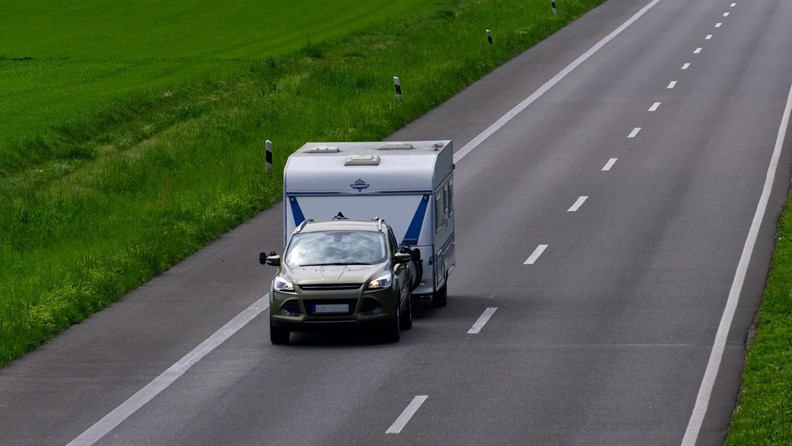

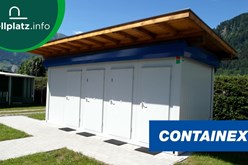
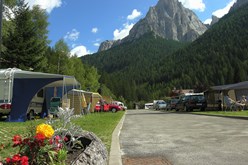
)

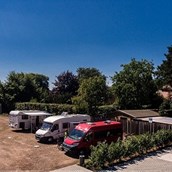
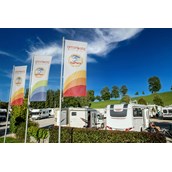
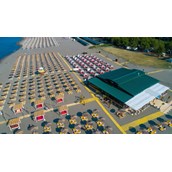
.png)